1. History
1.1. Taking a drug and alcohol history
1.1.1. Check list
1.1.1.1. Introduction
1.1.1.1.1. Ensure privacy
1.1.1.1.2. Introduce yourself
1.1.1.1.3. Ask about name and age
1.1.1.2. Chief complain
1.1.1.2.1. (He will say he has a problem with drinking)
1.1.1.3. History of presenting illness
1.1.1.3.1. Current consumption
1.1.1.3.2. Past consumption
1.1.1.3.3. Complications
1.1.1.3.4. CAGE Questionnaire
1.1.1.3.5. COLD
1.1.1.4. Past medical history
1.1.1.4.1. Any previous admissions or surgeries?
1.1.1.4.2. Any chronic diseases
1.1.1.5. Medications and allergies
1.1.1.5.1. Are on any medications?
1.1.1.5.2. Do you have any allergies?
1.1.1.6. Family history
1.1.1.6.1. Does drinking problems (or any other diseases) run in the family?
1.1.1.7. Social and occupational history
1.1.1.7.1. Occupational history
1.1.1.7.2. Social history
1.1.1.8. Related system review
1.1.1.8.1. GI
1.1.1.8.2. Cardio
1.1.1.8.3. Nervous system
1.2. History of musculoskeletal disorder
1.2.1. Older patients
1.2.2. Functional impairment
1.2.3. Occupational history
1.2.4. Complete history check list
1.2.4.1. Introduction
1.2.4.1.1. Introduce yourself
1.2.4.1.2. Shake hands
1.2.4.1.3. Explain what you want and take permission
1.2.4.1.4. Get name, age, and birthdate
1.2.4.2. Chief complain
1.2.4.2.1. What are you complaining from?
1.2.4.3. History of presenting illness
1.2.4.3.1. SOCRATES
1.2.4.3.2. FIFE
1.2.4.4. Past history
1.2.4.4.1. Any chronic diseases?
1.2.4.4.2. Any prevues hospital admissions or surgeries?
1.2.4.5. Drug history / allergy
1.2.4.5.1. Do you have any allergies?
1.2.4.5.2. Are you on any medications?
1.2.4.6. Family history
1.2.4.6.1. Are there any diseases that run in the family?
1.2.4.7. Occupational and social history
1.2.4.7.1. Occupational history
1.2.4.7.2. Social history
1.2.4.8. Review of systems
1.2.4.8.1. General symptoms
1.2.4.8.2. Then ask about related things to the patient's condition
1.2.4.8.3. Ask about things you forgot earlier
1.2.4.9. Dont forget to
1.2.4.9.1. Summarise what the patient says
1.2.4.9.2. Thank the patient and wish him good health
2. Physical examination
2.1. GALS screen
2.1.1. Check list
2.1.1.1. Introduction
2.1.1.1.1. Wash hands
2.1.1.1.2. Introduce yourself
2.1.1.1.3. Explain what you would like to examine
2.1.1.1.4. Gain consent
2.1.1.1.5. Expose patients chest, upper & lower body (leave only underwear)
2.1.1.2. Gait
2.1.1.2.1. Ask the patient to walk in a straight line then come back. Comment on:
2.1.1.3. Inspection
2.1.1.3.1. Front
2.1.1.3.2. Back
2.1.1.3.3. Side
2.1.1.4. Arms
2.1.1.4.1. Stand infront of the patient
2.1.1.4.2. Then ask him to put his hands to his sides, and extend elbow only
2.1.1.5. Legs
2.1.1.5.1. Ask the patient to lie supine
2.1.1.6. Spine
2.1.1.6.1. Stand behind the patient
2.1.1.6.2. Stand in front of the patient
2.1.1.7. FInish
2.1.1.7.1. Thank the patient
2.1.1.7.2. Wash hands
2.1.1.7.3. Summerize findings
2.1.2. Video
2.2. Drug and/or alcohol examination
2.2.1. Check list
2.2.1.1. Introduction
2.2.1.1.1. Wash hands
2.2.1.1.2. Approach to the patient - Rapport, empathy, and style
2.2.1.1.3. Ensure privacy
2.2.1.1.4. Introduce yourself
2.2.1.1.5. Explain what you would like to examine
2.2.1.1.6. Gain consent
2.2.1.1.7. Ask if patient has any pain anywhere before you begin!
2.2.1.2. Look at the patient from the end of the bed
2.2.1.2.1. Jaundice
2.2.1.2.2. Abdominal distention
2.2.1.2.3. Spider naevi
2.2.1.2.4. Caput medusa
2.2.1.2.5. Gynecomastia
2.2.1.3. Examine the hand
2.2.1.3.1. Leuconychia
2.2.1.3.2. Palmer erythema
2.2.1.4. Ask the patient to bend both hands back
2.2.1.4.1. Asterixis
2.2.1.5. Examine the eyes
2.2.1.5.1. Icterus
2.2.1.5.2. Nystagmus
2.2.1.5.3. Ophthalmoplegia
2.2.1.6. Cardiovascular exam
2.2.1.6.1. Pule
2.2.1.6.2. Blood pressure
2.2.1.6.3. Precordial examination and auscultation
2.2.1.6.4. Peripheral oedema
2.2.1.7. Respiratory exam
2.2.1.8. Abdominal exam
2.2.1.8.1. Asymmetry
2.2.1.8.2. Acsities
2.2.1.8.3. Hepatomegaly
2.2.1.9. Neurological exam
2.2.1.9.1. Tone
2.2.1.9.2. Power
2.2.1.9.3. Reflexes
2.2.1.9.4. Sensation
2.2.1.9.5. Coordination
2.2.1.9.6. Orientation
2.2.1.10. Finish
2.2.1.10.1. Thank the patient
2.2.1.10.2. Wash hands
2.2.1.10.3. Summerize findings
2.3. Examination of the lower back and hips
2.3.1. Hip exam
2.3.1.1. Check list
2.3.1.1.1. Introduction
2.3.1.1.2. Look
2.3.1.1.3. Feel
2.3.1.1.4. Move
2.3.1.1.5. Special Tests
2.3.1.1.6. Finish
2.4. Examination of the lower limb: knee and foot
2.4.1. Knee exam
2.4.1.1. Check list
2.4.1.1.1. Introduction
2.4.1.1.2. Look
2.4.1.1.3. Feel
2.4.1.1.4. Move
2.4.1.1.5. Special tests
2.4.1.1.6. Finish
2.4.1.2. Video
2.4.2. foot exam
2.4.2.1. Check list
2.4.2.1.1. Introduction
2.4.2.1.2. Look
2.4.2.1.3. Feel
2.4.2.1.4. Move
2.4.2.1.5. Special tests
2.5. Upper limb: hand, wrist, elbow & forearm
2.5.1. Hand exam
2.5.1.1. Check list
2.5.1.1.1. Introduction
2.5.1.1.2. Look
2.5.1.1.3. Feel
2.5.1.1.4. Move
2.5.1.1.5. Function (range of motion)
2.5.1.1.6. Finish
2.5.1.2. Carpal tunnel syndrom exam (median nerve injury)
2.5.1.2.1. Introduction
2.5.1.2.2. Look
2.5.1.2.3. Feel
2.5.1.2.4. Move
2.5.1.2.5. Neurological
2.5.1.2.6. Special tests
2.5.1.2.7. Finish
2.5.1.3. Video
2.5.2. Elbow exam
2.5.2.1. Check list
2.5.2.1.1. Introduction
2.5.2.1.2. Look
2.5.2.1.3. Feel
2.5.2.1.4. Move
2.5.2.1.5. Special tests
2.5.2.1.6. Finish
2.6. The upper limb: shoulder and cervical and thoracic spine
2.6.1. Shoulder exam
2.6.1.1. Check list
2.6.1.1.1. Introduction
2.6.1.1.2. Look
2.6.1.1.3. Feel
2.6.1.1.4. Move
2.6.1.1.5. Function
2.6.1.1.6. Special tests
2.6.1.1.7. Finish
2.6.1.2. Video
2.6.2. Spine exam
2.6.2.1. Cervical spine check list
2.6.2.1.1. Introduction
2.6.2.1.2. Look
2.6.2.1.3. Feel
2.6.2.1.4. Move
2.6.2.1.5. Neurological assessment of upper limb
2.6.2.1.6. Finish
2.6.2.2. Thoracic spine check list
2.6.2.2.1. I did not make it yet because we did not take it in the session
2.6.2.3. Full spine exam check list (this is NOT in the objectives)
2.6.2.3.1. Introduction
2.6.2.3.2. Look
2.6.2.3.3. Feel
2.6.2.3.4. Move
2.6.2.3.5. Special tests for lumber spine
2.6.2.3.6. Finish
2.6.2.4. Video for full spine exam
